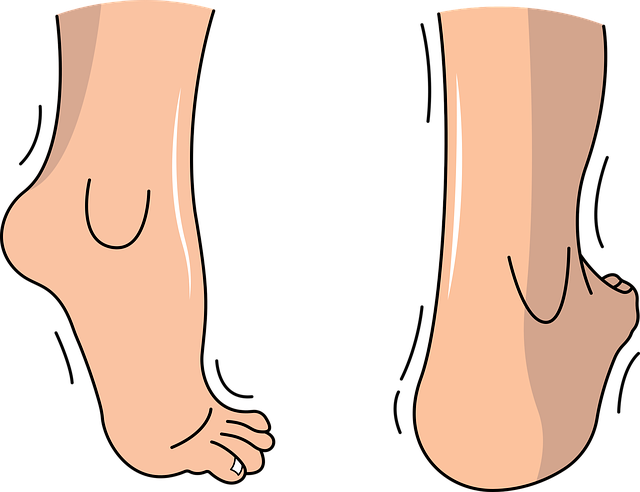Category: Regenerative Recovery and Pain Management
Regenerative Recovery and Pain Management: A Comprehensive Overview
Introduction
The field of regenerative recovery and pain management represents a confluence of medical innovation, rehabilitative science, and holistic care practices. This article delves into the intricacies of this multifaceted discipline, exploring its historical evolution, contemporary relevance, and future potential. We will examine the global impact, economic significance, technological advancements, policy landscapes, and real-world applications that make regenerative recovery and pain management a critical domain in healthcare today.
Understanding Regenerative Recovery and Pain Management
Regenerative recovery and pain management is an interdisciplinary approach that encompasses the use of biological agents, rehabilitative therapies, and cutting-edge technologies to aid in healing, reduce pain, and enhance the body’s natural recovery processes. It combines regenerative medicine techniques such as stem cell therapy with traditional pain management methods like physical therapy and medication management. The goal is to restore function, alleviate discomfort, and improve the quality of life for individuals suffering from acute or chronic pain.
Global Impact and Trends
The impact of regenerative recovery and pain management is felt worldwide, with varying degrees of adoption and innovation across different regions. North America and Europe have been at the forefront of technological advancements and clinical trials, while countries like South Korea and India are emerging as significant players due to their growing biotechnology sectors and cost-effective healthcare services. Global trends indicate a shift towards personalized medicine and minimally invasive procedures, reflecting a growing patient demand for effective, less intrusive treatments.
Economic Considerations
The economic landscape of regenerative recovery and pain management is dynamic, influenced by market dynamics such as supply and demand for specialized care, investment patterns in biotechnology, and the broader healthcare economics. This sector has become an integral part of the economy, driving job creation, stimulating research and development, and contributing to national health outcomes. The economic analysis also considers the cost-benefit ratio of regenerative treatments compared to traditional surgical interventions.
Technological Advancements
Technological advancements have significantly shaped the field of regenerative recovery and pain management. Innovations such as platelet-rich plasma (PRP) therapy, exoskeleton rehabilitation devices, gene editing technologies like CRISPR, and advanced imaging techniques have transformed patient care. These technologies not only aid in diagnosis and treatment but also in the understanding of the underlying mechanisms of chronic pain and tissue regeneration.
Policy and Regulation
Regenerative recovery and pain management is governed by a complex array of policies, regulations, and legislative frameworks that vary by jurisdiction. In the United States, the Food and Drug Administration (FDA) plays a crucial role in regulating cell-based therapies and medical devices. In Europe, the European Medicines Agency (EMA) oversees the regulatory processes for similar treatments. These regulations ensure patient safety while fostering innovation and ethical practice within the field.
Challenges and Criticisms
Despite its potential, regenerative recovery and pain management faces significant challenges and criticisms. Issues such as regulatory hurdles, clinical trial design, and concerns over the efficacy and safety of treatments are prominent. Additionally, the high cost of innovative therapies raises questions about accessibility and equitable healthcare delivery. Strategies to overcome these challenges include multi-center clinical trials to validate efficacy, cost analysis to determine economical treatment plans, and advocacy for regulatory reforms that encourage innovation while safeguarding patient welfare.
Case Studies
Several case studies illustrate the successful application of regenerative recovery and pain management in various contexts. A notable example is the use of stem cell therapy in treating osteoarthritis, which has shown promising results in reducing joint pain and improving mobility. Another case involves the adoption of virtual reality (VR) for post-operative rehabilitation, demonstrating how technology can enhance recovery outcomes. These studies provide valuable insights into best practices and the potential benefits of this field.
Future Prospects
The future of regenerative recovery and pain management is promising, with potential growth areas including the integration of artificial intelligence (AI) in personalized treatment plans and the expansion of telemedicine for remote patient monitoring and care. Emerging trends such as the use of bioengineered tissues and regenerative medicine in trauma and orthopedics are also on the horizon. Strategic considerations for the future include the need for continued research, ethical oversight, and collaboration between stakeholders to ensure the field’s evolution aligns with patient needs and societal expectations.
Conclusion
Regenerative recovery and pain management represent a pivotal intersection of technology, medicine, and care. Its historical context, global impact, and future prospects underscore its critical role in advancing patient health and reshaping the landscape of modern medicine. This article has provided a detailed examination of the various components that make up this field, offering a comprehensive understanding of its significance and potential.
FAQs
-
What is regenerative recovery and pain management?
Regenerative recovery and pain management encompasses the use of biological agents such as stem cells, platelet-rich plasma (PRP), and growth factors, combined with traditional pain management techniques to heal injuries, treat diseases, and alleviate chronic pain. -
How has technology impacted this field?
Technological advancements have significantly improved diagnostic accuracy, treatment precision, and patient outcomes. Innovations in biotechnology, imaging, robotics, and data analytics are integral to the field’s progress. -
What are some common regenerative treatments?
Common regenerative treatments include stem cell therapy, platelet-rich plasma (PRP) injections, gene therapies, and the use of bioengineered tissues or organs. These treatments are used to address a variety of conditions, from sports injuries to degenerative diseases. -
What are the regulatory challenges in this field?
Regulatory challenges include navigating the complex frameworks set by agencies like the FDA and EMA, ensuring patient safety, and managing the approval process for new treatments and technologies. -
How does regenerative recovery and pain management impact the economy?
The economic impact includes job creation in research and development, biotechnology sectors, and healthcare services. It also involves considerations of treatment costs, insurance coverage, and the overall cost-effectiveness of regenerative therapies compared to traditional interventions. -
Can you provide an example of a successful regenerative treatment case study?
One example is the use of adipose-derived stem cells (ADSCs) to treat patients with osteoarthritis, which has shown significant improvement in pain and function levels without the need for joint replacement surgery. -
What are some future trends in regenerative recovery and pain management?
Future trends include the integration of AI for personalized medicine, advancements in gene editing, the expansion of telemedicine, and the development of bioengineered tissues that could revolutionize trauma care and organ transplantation. -
Why is patient accessibility a concern in this field?
Patient accessibility is a concern due to the high costs associated with some regenerative treatments, which may not be covered by insurance or may be prohibitively expensive for certain populations, potentially leading to unequal access to care.
Non-Invasive Chronic Pain Relief: Tissue Regeneration, Nature, Mind & Tech

Chronic pain, a debilitating condition stemming from nerve damage, muscle strain, or joint inflammat…….
Promoting Recovery Through Cutting-Edge Regenerative Medicine Solutions
Integrative Pain Management: Holistic Relief Through Complementary Therapies

Integrative pain management offers a holistic approach, combining diverse therapies from Eastern med…….
Targeted Treatments: Regenerative Therapies for Chronic Joint and Muscle Pain

Joint and muscle pain, caused by injuries, inflammation, or chronic conditions, is effectively manag…….
Regenerative Pain Management: Weaning Off Meds for Holistic Healing

Regenerative pain management, an innovative approach, replaces traditional medication with technique…….
Targeted Treatments for Joint & Muscle Pain: Tissue Regeneration & Personalized Care

Joint and muscle pain, caused by injuries or chronic conditions like arthritis, significantly impact…….
Regenerative Medicine: Natural Solutions for Enhanced Mobility & Pain Relief

Pain relief therapies utilizing regenerative medicine are transforming healthcare by harnessing the…….
Non-Invasive Pain Treatments: Expert-Led Regenerative Therapy for Optimal Recovery

Advanced regenerative practices, including platelet-rich plasma (PRP) therapy and stem cell therapy,…….
Regenerative Pain Management: Targeted Treatments for Chronic Joint and Muscle Relief

Regenerative pain management is a revolutionary approach to treating joint and muscle pain, offering…….

